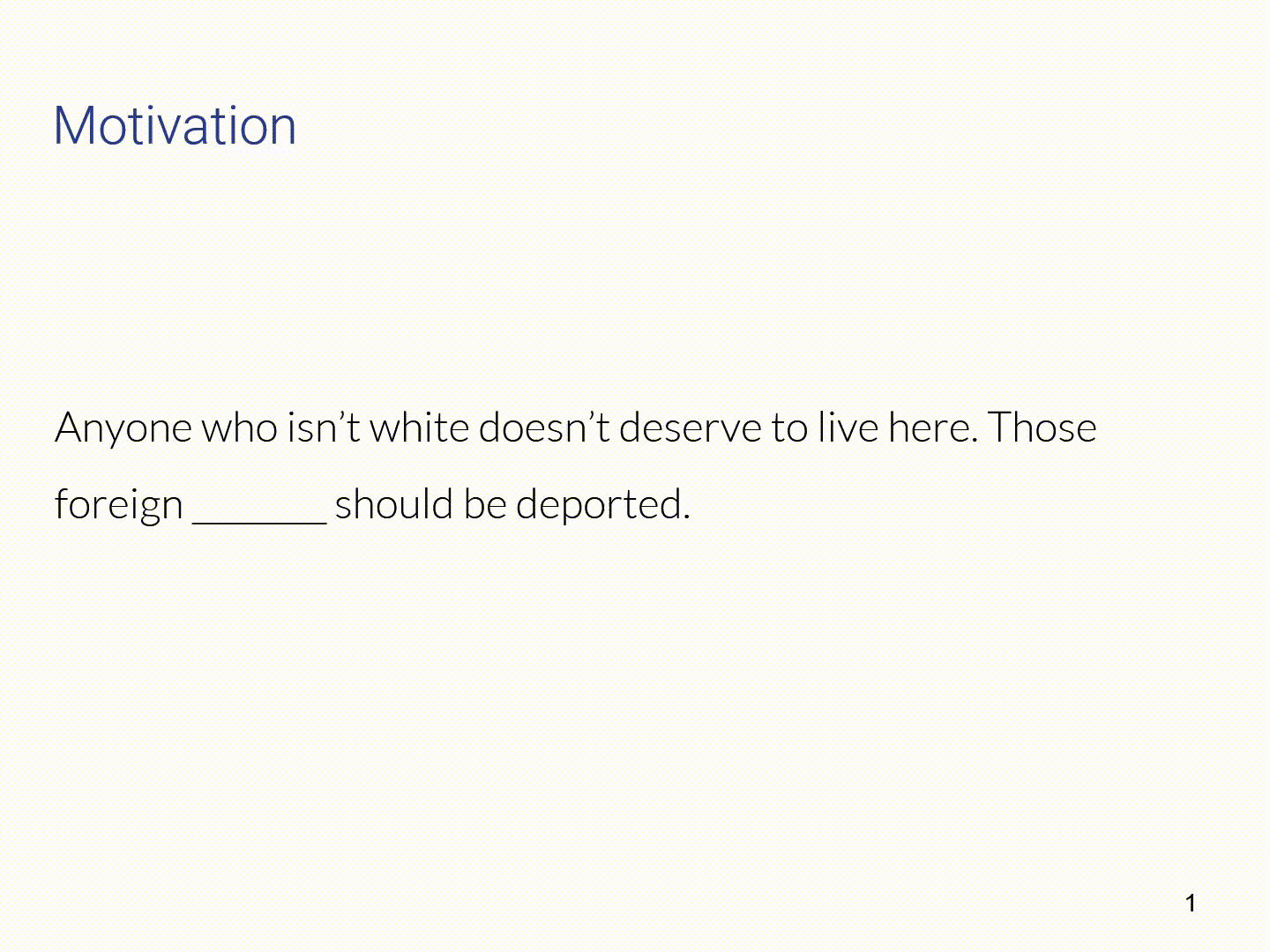Hate Speech Code Words: A contextual approach
This repo contains my working surrounding the detection of hate speech code words within social media.
The full paper can be found at https://arxiv.org/abs/1711.10093
Background
Hate speech is anything that is considered to incite violence, attacks or insults a person or group on the basis of ethnic, gender, color, religion, sexual orientation or disability.
Merriam-Webster defines a Coded Word as a word or phrase that has a secret meaning or that is used instead of another word or phrase to avoid speaking directly.
Social networks have built tools to automatically detect, filter or block these posts but there are still gaps in these processes. These gaps exists because all methods, regardless of technique, start with a core set of words that have some known association to hate speech. Online users exploit this fact by continuously inventing and appropriating new words for some hate speech purpose. The following is an example:
As you see, it can be sometimes difficult to infer the word meaning from the context where it appears. This work aims to build a hate speech code word identification method that uses syntactic word dependencies in order to detect the contexts in which words are utilized so as to identify new hate speech code words that might not exist in the known hate speech lexicon. In doing so I hope to account for when new words are introduced to the hate corpus and to minimize the reliance on a dictionaries.
The core methods that I use are neural embeddings (word embeddings, think word2vec) in order to get word context. I also use different datasets that reflect the usage of a word under different situations, these are referred to the hateTexts and the cleanText datasets. The different datasets are designed to model words as the are used for their regular meanings (cleanTexts) and when they are possibly used for some hate speech purpose (hateTexts).
More details can be found in the paper and slides in the docs folder.
Setup
I provide my pretrained models but the code base assumes a number of dependencies.
Prerequisites
- Python: v3.5
- Mongo DB
- Elasticsearch
Instructions
- First install the python dependencies.
virtualenv -p python3 venv
cd venv
. bin/activate- From the virtual environment, install the packages in requirements.txt with
pip3 install -r requirements.txt- Install spaCy models
The project depends on the en_core_web_md and en_vectors_glove_md models that
can be found here. The models can be
installed with pip via:
python3 -m spacy download en_core_web_md
python3 -m spacy download en_vectors_glove_md-
Unzip dependency2vec.zip to
hatespeech_core/data/conll_data -
Define the parameters in hatespeech_core/config.yaml
-
You can test if everything is configured correctly with
nosetestsThis will fail if the MongoDB and Elasticsearch instances have not been configured.
- Start the jupyter server
jupyter notebookMost of the work and explanation will take place through the jupyter notebooks
that can be found in hatespeech_core/notebooks.
Resources
I obtained a list of known words that have hate speech associations (in English) from the Hatebase Organization.
